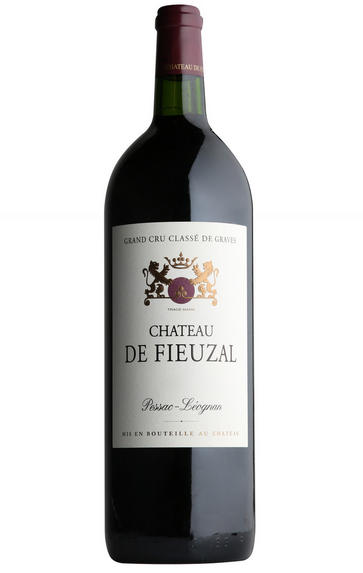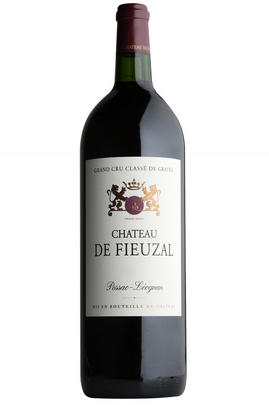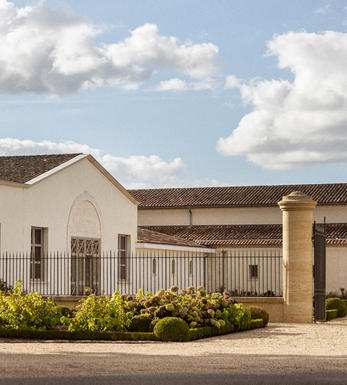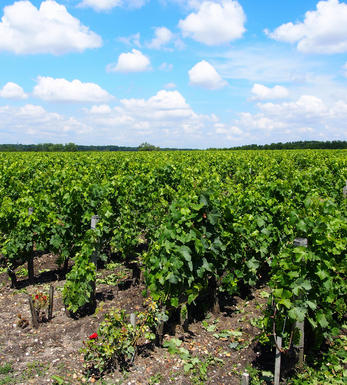
2009 Château de Fieuzal, Pessac-Léognan, Bordeaux

Critics reviews
Robert M. Parker, Jr. - 23/12/2011
(Robert Parker - Wine Advocate - Apr 2010)
About this WINE

Chateau de Fieuzal
The origins of Château de Fieuzal date back to the first stirrings of winemaking in Bordeaux’s Graves region. This Pessac-Léognan estate sits on one of the best gently sloping, gravel-outcrops in the area - long admired for its excellent drainage and heat diffusing properties. While Château de Fieuzal its known for producing some of the best white wines in Bordeaux, its reds are equally good, and in 1959 the estate was awarded the official status of Graves Grands Cru Classé.
Fieuzal is named after the family who owned the property up to 1851. The estate now covers some 75 hectares, 10 of which are used to grow white wine grapes. The current owners are Brenda and Lochlann Quinn, who hired talented young winemaker Stephen Carrier in 2007. Working closely together, they have introduced a rigorous and innovative winemaking style, and have broadened the estate’s reputation considerably. As well as hiring Carrier, the Quinns brought well-known Bordeaux winemaking consultant, Hubert de Bouärd, owner of Château Angélus, on board in 2006.
The vines at Château de Fieuzal have a current average age of 30 years, and are planted at a density of 9,000 plants per hectare. Chemical applications are kept to a bare minimum, traditional farming methods are used and grapes are picked and sorted – twice - by hand, all of which helps to preserve the purity of the fruit. Vines are managed on a plot by plot basis, essentially meaning that each undergoes tailored winemaking processes to avoid masking or muting their distinct flavours and aromas. Other developments at Fieuzal have included a restructuring of the vineyard and, in 2011, the inauguration of a new cellar, fully equipped with advanced winemaking facilities.

Pessac-Leognan
In 1986 a new communal district was created within Graves, in Bordeaux, based on the districts of Pessac and Léognan, the first of which lies within the suburbs of the city. Essentially this came about through pressure from Pessac-Léognan vignerons, who wished to disassociate themselves from growers with predominately sandy soils further south in Graves.
Pessac-Léognan has the best soils of the region, very similar to those of the Médoc, although the depth of gravel is more variable, and contains all the classed growths of the region. Some of its great names, including Ch. Haut-Brion, even sit serenely and resolutely in Bordeaux's southern urban sprawl.
The climate is milder than to the north of the city and the harvest can occur up to two weeks earlier. This gives the best wines a heady, rich and almost savoury character, laced with notes of tobacco, spice and leather. Further south, the soil is sandier with more clay, and the wines are lighter, fruity and suitable for earlier drinking.
Recommended Châteaux: Ch. Haut-Brion, Ch. la Mission Haut-Brion, Ch. Pape Clément, Ch Haut-Bailly, Domaine de Chevalier, Ch. Larrivet-Haut-Brion, Ch. Carmes Haut-Brion, Ch. La Garde, Villa Bel-Air.

Cabernet Sauvignon Blend
Cabernet Sauvignon lends itself particularly well in blends with Merlot. This is actually the archetypal Bordeaux blend, though in different proportions in the sub-regions and sometimes topped up with Cabernet Franc, Malbec, and Petit Verdot.
In the Médoc and Graves the percentage of Cabernet Sauvignon in the blend can range from 95% (Mouton-Rothschild) to as low as 40%. It is particularly suited to the dry, warm, free- draining, gravel-rich soils and is responsible for the redolent cassis characteristics as well as the depth of colour, tannic structure and pronounced acidity of Médoc wines. However 100% Cabernet Sauvignon wines can be slightly hollow-tasting in the middle palate and Merlot with its generous, fleshy fruit flavours acts as a perfect foil by filling in this cavity.
In St-Emilion and Pomerol, the blends are Merlot dominated as Cabernet Sauvignon can struggle to ripen there - when it is included, it adds structure and body to the wine. Sassicaia is the most famous Bordeaux blend in Italy and has spawned many imitations, whereby the blend is now firmly established in the New World and particularly in California and Australia.


Buying options
Add to wishlist
Description
A terrific, classic Graves with notes of subtle smoke, black raspberries, black currants, graphite and unsmoked cigar tobacco, this full-bodied, deep, concentrated de Fieuzal is far more generous and deep than most vintages of the past. There is also a wonderful freshness and length to this somewhat oversized de Fieuzal while it still maintains its elegance and class. Drink it over the next 20-25 years.
Robert M. Parker, Jr. - 23/12/2011
wine at a glance
Delivery and quality guarantee